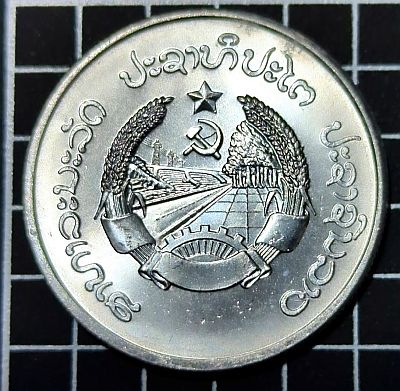
Laos is a landlocked country between Vietnam, Cambodia, Thailand, Myanmar and China. The Lao people were a tribe originally from Yunnan, China, who were pushed south to the border of the Khmer empire in the 13th century. The first Lao kingdom, called Lan Xang or “land of the million elephants,” was founded by Fa Ngum in 1353. Over the years, Lan Xang armies won and lost territory from the Khmer, Burmese, Vietnamese, Thai and Chinese in Yunnan. By the 17th century, its holdings were quite sizable. However, its power began to crumble in 1694 when King Souligna Vongsa died without an heir. By the end of the 18th century, Siam (Thailand) controlled most of present-day Laos and Cambodia. Siam ultimately ceded much of this territory to French Indochina to maintain their own independence. For the average Laos peasant farmer, life did not change much under the French. French Indochina fell briefly to the Japanese in WWII. When Japan surrendered in 1945, the Lao Issara (“Free Laos”) movement, led by the king’s nephew, declared independence. The king sided with the French, and they stayed. In the 1960s, Laos, due to its proximity to Vietnam, was dragged into the Vietnam war, ultimately suffering the heaviest bombings of any country in history. In 1975, the North Vietnamese took control of Laos, removing Buddhism and establishing the communist Lao People’s Democratic Republic, which remains the only party. Buddhism was reformed and reinstated in the 1990s as a way to promote Lao nationalism.
Today, Laos has a population of over 7.5 million, and close ties with Vietnam and China.
Obverse

The obverse of the coin features the coat of arms, with the country’s name around the edge. The text reads “ສາທາລະນະລັດ ປະຊາທິປະໄຕ ປະຊາຊົນລາວ”. This translates to “Lao People’s Democratic Republic”. Here is a colour version of the coat of arms:
The Emblem of Laos (1975 – 1991 version), from Wikipedia. The main difference to the current coat of arms, is that the hammer and sickle, and star have been replaced with the national shrine Pha That Luang.
The communist symbol of a hammer and sickle is pictured at the top. A dam is pictured, which is a symbol of power generation at the reservoir Nam Ngum. An asphalt street is also pictured, as well as a stylized watered field.
In the lower part is a section of a gear wheel. The inscription on the left reads “Peace, Independence, Democracy” (Lao script: ສັນຕິພາບ ເອກະລາດ ປະຊາທິປະໄຕ) and on the right, “Unity and Prosperity” (Lao script: ເອກະພາບ ວັດຖະນາຖາວອນ). The arms are surrounded by wheat sheafs. The dam and power lines reminded me of the North Korean Coat of Arms pictured on the 1 Chon coin.
Reverse

The value and denomination (50 Att), above a fish flanked by palm trees. Laos is home to several species of palm trees, from the small Dwarf Palm, to the large Talipot Palm. Oxfam have given grants to several villages in Laos to help conserve these and to sustainably use the materials the palm creates.
Numista only notes the “fish”, it doesn’t specify what kind. I found several posters of fish in Laos (and this facebook fish guide) but couldn’t find one which matched the long, narrow dorsal fin and split tail (but I did find this guide to fish fins if you need help identifying the types of fins). If you know what kind of fish that is, please do let me know!
EDIT: Update from Numista – the fish is a “Tilapia”, a fish native to Africa and the Middle East. Introduced into other parts of the world, they have become either a pest (as in India) or a popular fish farmed in cages, as in Laos. Tilapia is very popular in Laos seafood dishes.
The currency of Laos has been the “Kip” since 1979. 1 Kip = 100 Att. The 10, 20, and 50 Att coins were only ever issued in 1980. In fact, while the PDR have issued at least 296 coins, including gold coins up to 1 million Kip, these Att coins are the only coins issued for circulation. Interestingly this site suggests there are coins from 1 – 100 Kip, however I cannot find any other evidence of these coins. Other sites back up the existence of only the 1980 issue Att coins.


Leave a Reply